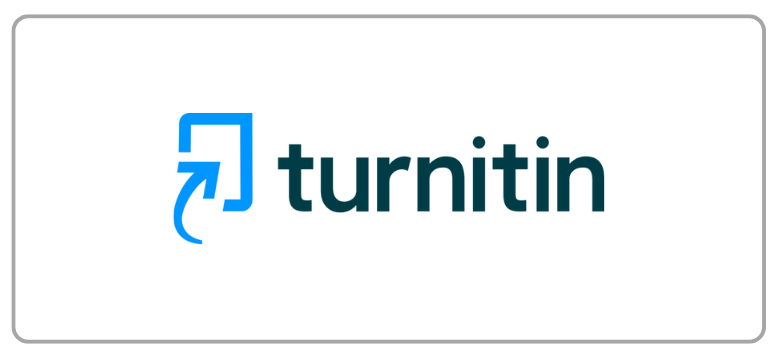Factors and Benefits that Affect Lender's Interest in Giving Loans in Peer to Peer (P2P) Lending Platform
DOI:
https://doi.org/10.21512/bbr.v12i2.6359Keywords:
4C factors, lender, interest, loans, P2P lending platformAbstract
Financial technology (fintech) is a combination of the financial industry and technology. One of the uses of fintech is the Peer to Peer (P2P) lending platform, which is a funding channel. This platform is an investment alternative that can increase borrowers' and investors' prosperity. However, P2P also has a high risk that must be considered. Lenders or investors must conduct a loan application feasibility study before giving a loan. The research examined the impact of Character, Capital, Capacity, Collateral (4C) and the benefits that lenders received, as well as the benefits of fintech on lenders' interest in placing their funds on the P2P lending platform. Data were obtained from questionnaires distributed to P2P lending users. The sampling technique was purposive sampling. The total number of respondents who returned the questionnaire was 70 respondents. However, only 53 data could be used in the research. Then, the data were analyzed using Moderated Regression Analysis (MRA). The results show that the 4C factors do not significantly affect the lenders' interest in giving loans. Meanwhile, the benefits and fintech have a significant direct impact. Fintech cannot act as a moderator variable in this model. P2P companies must provide complete information and credit analysis regarding borrowers' conditions to reduce lenders' potential risk.
References
Alt, R., Beck, R., & Smits, M. T. (2018). Fintech and the transformation of the financial industry. Electronic Markets, 28, 235-243.
Bachmann, A., Becker, A., Buerckner, D., Hilker, M., Kock, F., Lehmann, M., ... & Funk, B. (2011). Online peer-to-peer lending-a literature review. Journal of Internet Banking and Commerce, 16(2), 1-18.
Baiden, J. E. (2011). The 5 C's of credit in the lending industry. SSRN Electronic Journal.
Byanjankar, A. (2017). Predicting credit risk in Peer-to-Peer lending with survival analysis. In 2017 IEEE Symposium Series on Computational Intelligence (SSCI). https://doi.org/10.1109/ssci.2017.8280927
Chen, D., Lou, H., & Van Slyke, C. (2015). Toward an understanding of online lending intentions: Evidence from a survey in China. Communications of the Association for Information Systems, 36, 317-336. https://doi.org/10.17705/1cais.03617
Cummins, M., Lynn, T., Mac an Bhaird, C., & Rosati, P. (2019). Addressing information asymmetries in online Peer-to-Peer lending. In Disrupting finance (pp. 15-31). Palgrave Pivot, Cham.
Fintechnews Singapore. (2018). Fintech Indonesia report 2018 – The state of play for fintech Indonesia. Retrieved February 13th 2019 from https://fintechnews.sg/20712/indonesia/fintech-indonesia-report-2018/
Gunadi, W. (2018). Regulasi fintech pada era Industri 4.0. In Konferensi Digital Transformation & Industry 4.0.
Guo, Y., Zhou, W., Luo, C., Liu, C., & Xiong, H. (2016). Instance-based credit risk assessment for investment decisions in P2P lending. European Journal of Operational Research, 249(2), 417-426. https://doi.org/10.1016/j.ejor.2015.05.050
Hutapea, R. (2020). Minimalisasi risiko kredit (NPL) pada fintach Peer to Peer lending melalui kewajiban pelaporan SLIK OJK. Jurnal Ilmiah Mandala Education, 6(2), 241-253.
Iman, N. (2018). Assessing the dynamics of fintech in Indonesia. Investment Management and Financial Innovations, 15(4), 296-303. https://doi.org/10.21511/imfi.15(4).2018.24
Jiang, J., Liao, L., Wang, Z., & Zhang, X. (2021). Government affiliation and peer-to-peer lending platforms in China. Journal of Empirical Finance, 62(June), 87-106. https://doi.org/10.1016/j.jempfin.2021.02.004
Lee, S. (2017). Evaluation of mobile application in user's perspective: Case of P2P lending apps in fintech industry. TIIS, 11(2), 1105-1117. https://doi.org/10.3837/tiis.2017.02.027
Leong, C., Tan, B., Xiao, X., Tan, F. T. C., & Sun, Y. (2017). Nurturing a fintech ecosystem: The case of a youth microloan startup in China. International Journal of Information Management, 37(2), 92-97. https://doi.org/10.1016/j.ijinfomgt.2016.11.006
Lin, X., Cai, S., Xu, D., & Fu, X. (2015). Judging online Peer-To-Peer lending behavior: An integration of dual system framework and two-factor theory. In PACIS (p. 138).
Moti, H. O., Masinde, J. S., Mugenda, N. G, & Sindani, M. N. (2012). Effectiveness of credit management system on loan performance: Empirical evidence from micro finance sector in Kenya. International Journal of Business, Humanities and Technology, 2(6), 99-108.
Pokorná, M., & Sponer, M. (2016). Social lending and its risks. Procedia-Social and Behavioral Sciences, 220, 330-337. https://doi.org/10.1016/j.sbspro.2016.05.506
Riyanto, B. (2013). Dasar-dasar pembelanjaan perusahaan. Yogyakarta: Andi.
Ross, S. A., Westerfield, R., & Jordan, B. D. (2016). Fundamentals of corporate finance. New York: McGraw Hill Education.
Ryu, H. S. (2018). What makes users willing or hesitant to use fintech?: the moderating effect of user type. Industrial Management & Data Systems, 118(3), 541-569. https://doi.org/10.1108/imds-07-2017-0325
Serrano-Cinca, C., Gutiérrez-Nieto, B., & López-Palacios, L. (2015). Determinants of default in P2P lending. PLoS ONE 10(10), 1-22. https://doi.org/10.1371/journal.pone.0139427
Stern, C., Makinen, M., & Qian, Z. (2017). Fintechs in China – With a special focus on Peer to Peer lending. Journal of Chinese Economic and Foreign Trade Studies, 10(3), 215-228. https://doi.org/10.1108/jcefts-06-2017-0015
Sukmaningsih, D. W. (2018). A model for lender-borrower trust in Peer-to-Peer lending. ComTech: Computer, Mathematics and Engineering Applications, 9(1), 15-24. https://doi.org/10.21512/comtech.v9i1.4287
Suryono, R. R., Purwandari, B., & Budi, I. (2019). Peer to Peer (P2P) lending problems and potential solutions: A systematic literature review. Procedia Computer Science, 161, 204-214. https://doi.org/10.1016/j.procs.2019.11.116
Unsal, O., & Rayfield, B. (2019). Trends in financial innovation: Evidence from fintech firms. In J. J. Choi & B. Ozkan (Eds.), Disruptive innovation in business and finance in the digital world. Emerald Publishing Limited.
Zavolokina, L., Dolata, M., & Schwabe, G. (2016). The fintech phenomenon: Antecedents of financial innovation perceived by the popular press. Financial Innovation, 2(1), 1-16. https://doi.org/10.1186/s40854-016-0036-7
Downloads
Published
How to Cite
Issue
Section
License
Copyright (c) 2021 Christiana Fara Dharmastuti, Jonathan Laurentxius

This work is licensed under a Creative Commons Attribution-ShareAlike 4.0 International License.
Authors who publish with this journal agree to the following terms:
a. Authors retain copyright and grant the journal right of first publication with the work simultaneously licensed under a Creative Commons Attribution License - Share Alike that allows others to share the work with an acknowledgment of the work's authorship and initial publication in this journal.
b. Authors are able to enter into separate, additional contractual arrangements for the non-exclusive distribution of the journal's published version of the work (e.g., post it to an institutional repository or publish it in a book), with an acknowledgment of its initial publication in this journal.
c. Authors are permitted and encouraged to post their work online (e.g., in institutional repositories or on their website) prior to and during the submission process, as it can lead to productive exchanges, as well as earlier and greater citation of published work.
USER RIGHTS
All articles published Open Access will be immediately and permanently free for everyone to read and download. We are continuously working with our author communities to select the best choice of license options, currently being defined for this journal as follows: Creative Commons Attribution-Share Alike (CC BY-SA)





















